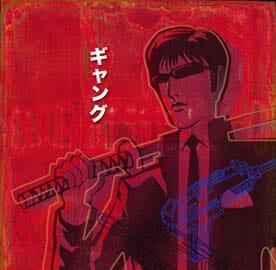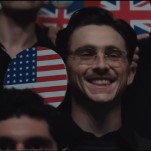Japanese Cinematic History

Even if you’ve never viewed Japanese films, you’ve certainly felt their influence. George Lucas, an avid fan of Akira Kurosawa, visited Japan in the 1970s and borrowed liberally from Japanese filmmakers for his forthcoming Star Wars saga. The plot—even the promotional posters—for Episode IV made heavy use of Kurosawa’s The Hidden Fortress. The cantina scene was lifted from Kurosawa’s Yojimbo, and the character Gonji provided the inspiration for Yoda. Even the term “Jedi” owes it origins to Japanese cinema, stemming from jidaigeki, the Japanese term for the period dramas that have long been one of the country’s most popular film genres.
Many others have also referenced Japanese film. Preston Sturges remade Kurosawa’s The Seven Samurai with The Magnificent Seven. The Coen Brothers incorporated much of Yojimbo in Miller’s Crossing. And Yasujiro Ozu influenced such auteurs as Wim Wenders and Jim Jarmusch. Japanese animation, or anime, began to exert a considerable influence on Western cinema and pop culture in the 1980s as it expanded to feature-length films for older audiences. More recently, Quentin Tarantino paid homage to the amoral orgies of violence common in some Japanese films, where the beauty and elegance of the brutality is what’s to be admired.
This issue, we take a look at Japanese cinema in our first installment of the World Cinema series. Here you’ll find a quick primer on Japanese film, Robert Davis’ reflection on Ozu and Tokyo Story, Tim Sheridan’s analysis of the outlaw loner in Japanese film, and some reviews of recent DVD releases from Japanese directors.
At the turn of the 20th Century, the first Japanese films merely adapted puppet and kabuki theater. An in-person narrator, or benshi, told a story to accompany a silent film, and filmgoers valued the skill and innovation of the narrator as much as (if not more than) the skill of those in front of and behind the camera. While this made for a unique art form in and of itself, it also made it hard to repeat consistently and to export. Reviewers criticized the poor use of the new visual medium and the lack of quality storytelling embedded in these silent films, as the story was left to the benshi.
In the 1920s, modernism began to exert its influence on Japanese cinema, especially in the form of German Expressionism. Where characters in earlier films were detached from the lives of filmgoers, these films depicted the daily lives of ordinary, middle-class people. Soviet film and leftist ideologies also impacted most genres, from period and contemporary dramas to the popular melodramas and literary adaptations. Filmmakers also began to experiment with their form and developed skillful and innovative techniques.
As World War II approached, the state began exerting its power. The Emperor conscripted filmmakers for pro-war, pro-Fascist propaganda. Ozu was one of the few directors to avoid this draft, focusing instead on completely non-political themes. Following the war, Allied occupation forces prohibited nationalistic films but otherwise gave filmmakers a new freedom.
Kurosawa’s Rashomon (1950) represented a decisive break in Japanese filmmaking. With its presentation of multiple, conflicting views of an event, it allowed for multiple interpretations and demanded active viewing from the audience. Also at that time, the Nikkatsu company established the new genres of youth and action films. Modern, Occidental themes and approaches were increasingly integrated with Japanese culture and aesthetics.
-

-

-

-

-

-

-

-

-

-

-

-

-

-

-

-

-

-

-

-

-

-

-

-

-

-

-

-

-

-

-

-

-

-

-

-

-

-

-

-








































